Why You Need a Professional Guitar Setup or Bass Setup
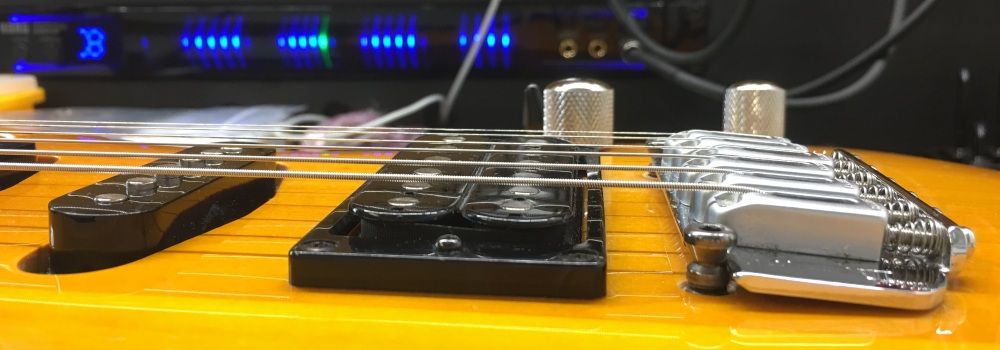
Professional Guitar and Bass Setups
This article will introduce you to what is included in a professional guitar setup, the cost for a guitar setup and the benefits you will enjoy with a guitar in optimal playing condition
What Is a Professional Guitar Setup?
A professional guitar setup is a process which includes an inspection, adjustments, and basic guitar maintenance. The difference in a professional setup and a DIY setup is significant. A truly professional setup requires specialized tools and a good understanding of the mechanics of a stringed instrument.
It is very important to know what every part does, how they relate to one another, and specifications. This is especially true when your setup involves adjusting a truss rod, troubleshooting specific issues, and doing guitar repairs.
Acoustic Guitar Setup vs Electric Guitar
An acoustic guitar setup has distinct differences versus an electric guitar setup. Firstly, you’re going to need luthier type skills to work with many types of wood, wood bridge, framing. If the acoustic has an amplification system that’s unlike working with pickups on an electric guitar. When working on an acoustic guitar it’s common to find yourself dealing with unexpected and challenging situations. Some of the other work you may encounter are mentioned in an article posted on AcousticGuitar.com which stated, “On a cautionary note, a lot of procedures involved in a setup—like nut filing, saddle shaving, and truss-rod adjustments—can cause expensive damage or require parts replacement if done improperly.”1.
Can I Do My Own Guitar Setup?
Can you work on your guitar? It really comes down to your level of technical understanding, your mechanical aptitude, and your ability to pay for your inevitable mistakes. Anyone who is good at doing something will tell you they made a lot of mistakes while learning. Becoming proficient at guitar tech work takes a lot of time spent studying, and countless hours of hands-on practice.
You need to recognize that every screw, knob, and piece of hardware has a function. For some settings, even a very slight change has a significant impact. In fact, some of the settings on your guitar are measured in 1/1000th of an inch. You need to understand what’s in front of you before you attempt any work.
Until you really know what you’re doing you should hire a competent person to do your guitar setups.
If you want to do it yourself
Are truly serious about wanting to learn how to do your own setups? If so, get a cheap used guitar, buy all of the tools you need, and go for it. It’s worth mentioning that you are going to need tools to do the work and even more tools to repair mistakes and bad work. To get started, you need to find project guitars for hands-on learning. You can find guitars for $20-30 on websites and apps like Facebook Marketplace and Nextdoor.
What about watching YouTube videos? YouTube can be very good and also be very bad. Anybody can make a video meaning your odds of getting bad information are quite high. If you watch DIY guitar setup videos look for professionals with a legit work space and that use professional guitar setup tools. Find a person that instructs (not just making a rambling video), and that offers specific, detailed information. We recommend videos by Premier Guitar, Crimson Guitars, StewMac and any official guitar manufacturer (Fender, Taylor, Gibsin, etc.) Keep in mind that you cannot acquire years of knowledge in a few 10 minute videos.
But I read on a blog forum … is the beginning of a statement indicating you may have ingested some amateur information. Online forums are filled with unskilled people offering advice (well intentioned but still very faulty) that can lead you to do more harm than good. If you’re in the process of learning it’s easy to follow bad information because you don’t know right from wrong. Bad info often leads to mistakes that cause frustration, panic and repair work. For example; NO, you do not use a guitar string wrapped in sandpaper to file nut string slots. When you read blog comments take a minute to check the credibility of the source.
How Much Does a Guitar Setup Cost?
The price for a guitar setup is generally determined by the cost of living in your area, and the scope-of-work to be provided.
The price for a professional guitar setup or bass setup can range from $45 to $300. The reason for the difference has to do with the scope-of-work and the cost of doing business. For example, to make a living, a guitar shop in pricey Boston needs to charge more than a guitar shop in remote New Mexico.
As for the scope-of-work, this is where you need to understand that not all setup services are the same. A certain big-box store offers a “24 Point Setup” which sounds impressive but is the result of simply separating inspection from actual work. To do the work you must look at every part of the guitar anyway so separating the guitar inspection from the work is a bit of a stretch. In contrast, the Artisan Luthiers website has pages for guitar setups that offer a 12-Point Guitar Setup with the notation, “We could call this a 24-Point Inspection, we just don’t list the inspection apart from the work.”2. Don’t be afraid to ask what you’re getting for your money.
Traditional Guitar Setup
A traditional setup is a manual process which typically costs $40 to $85, sometimes up to $125, plus strings and any necessary reapirs. At a minimum the scope-of-work should include an overall inspection, new strings, tuning, intonation and detailing. It often includes adjusting truss rod (neck), pickup heights/angles, string action, string radius, saddle heights, bridge angle (floating trems), and tightening loose jacks, knobs, tuners, etc. You should ask about the tuning process and try to find a shop that uses a rack mounted digital strobe tuner.
PLEK Guitar Setup
A PLEK Setup is a cutting edge technique and practical for only expensive guitars. San Franciso GuitarWorks describes a PLEK as, “A PLEK is a computer controlled fret leveling tool, which in the hands of an experienced tech, can provide an unparalleled fret job. It levels frets with an accuracy of .001″, assists in the process of making nuts, and offers extremely advanced setup functions.”3. Because the cost of a PLEK machine is very high you’ll find PLEK setups offered by only expensive, high-end shops. An average cost for a PLEK setup which is around $300 plus strings, gluing in frets (often a requirement), and any necessary repairs.
Is it worth spending money on getting a cheap guitar setup by a professional?
Regardless of the value of your guitar it needs a professional quality setup to play properly. A proper setup will help you to get the most from your practice time and best results when playing. You will find it easier to play, and because the tone is accurate you’ll be able to tell how much you are improving.
If the cost of a guitar setup is an issue, try working with a tech that can give you a reduced scope-of-work for a lower rate. Ask what the price would be for new strings, tuning and setting intonation. Sure, you won’t have every detail checked and adjusted but you will have covered the top three things that matter.
Do New Guitars Need to Be Set Up?
Every guitar will need periodic inspection and adjustments. Every new guitar or bass should be checked out by a guitar tech or luthier … and not someone at the store who is selling it to you. Guitar manufacturers take steps to ship guitars with a reasonably setup but they often are slack on the tolerances. For example, a new guitar with higher than spec string action is not likely to have fret buzz (fewer buyer complaints).
What Is Included in a Guitar Setup?
There is somewhat of a standard task list for a guitar setup. Depending on the particular guitar or bass some things may not need to be adjusted. Sometimes things need a lot of adjustment. In particular, guitars that are poorly maintained (rarely professionally serviced) often need more work than a well maintained guitar. The following is a quick view of the main parts of a guitar setup.
Visual Inspection
The first thing most shops will do is give your guitar a visual and mechanical check to identify problems. This could be as simple as noticing missing screws, corrosion, body damage, hardware malfunctions, or neck problems. A setup should include checks to confirm controls, pickups, jack and other items all work properly.
The best guitar techs make written notes on these issues as they do your setup. These notes are especially useful as a reference on subsequent setups when items previously noted as potential issues have become real problems.
Truss Rod Adjustments
Except for really low-end acoustic guitars a guitar will have a truss rod. A truss rod is basically a metal rod inside of the neck which has a truss rod nut to make adjustments. Adjusting the truss rod tension changes the curvature (add or decrease bowing) of your neck. The amount of curvature is known as “relief”.
The primary purpose of adjusting the truss rod is to maintain an ideal string action. Proper adjustment gives you the lowest possible string action without fret buzz. Ideally your neck will be relatively straight with just a slight amount of relief. Your guitar tech can use any of several ways to assess or measure relief when doing your setup. Before the work is done you should let your guitar tech know if you have and personal preferences on string action, i.e., higher or lower.
Floating Bridge and Tremolo Adjustments
If you have a guitar with a floating bridge and tremolo it may require some adjustment as part of your setup. The tension on the bridge must be balanced to hold the bridge in a position that is parallell with the body.
The string tension pulls the bridge up and away from the body. The trem claw position and springs pull the bridge down and against the body.
The string tension is what it is, so the adjustment is done in the trem cavity. Sometimes moving the claw springs in or out can achieve balance. Some times you may need to add or remove trem springs, or even change to new trem springs with more or less tension strength.
Strings Replacement
Obviously you’re going to replace your strings when you get a setup. Ideally you will choose new strings that are the size of what was originally installed on your guitar. You may want to explore the types of guitar strings and learn how they affect palyability and tone.
If you want strings that are heavier or lighter than what you’ve had you may need to modify or replace your nut. The string slots need to fit the string size to mitigate problems with tuning or buzzing.
String Radius
The fretboard on your guitar or bass may look flat but it actually has a slight crown which curves down to each side. In order to have proper playability the overall radius of your strings should closely match the fretboard radius. Adjusting the radius is done via saddle heights and measured with tools made specifically for this task.
It’s worth mentioning here that adjusting saddle heights also affects your string action, and some guitars have fretboards with a “compound radius”. Adjusting your string radius can sometimes be a bit tricky.
String Action (String Height)
The details of setting string action are described in an article by Sweetwater. Their article states, “String height or action describes the distance between the top of your frets to the bottom of your strings. This distance plays a key role in your setup because it determines the ease in which your guitar can be played. Action determines how much pressure and distance is required for the string to make full contact with each fret. This height decides how “aggressive” one can play before fret buzz occurs.”.4
When you get a professional setup, the guitar shop will use a “standard height setting” unless you tell them otherwise. Adjusting string action is done by adjusting the truss rod and/or the saddle heights.
If you prefer it higher or lower you need to ask for this before the work is done. This is because changing the string action also changes the intonation and you would otherwise cause the shop to have to redo their work.
Higher or Lower – which is better?
String action is a matter of personal preference so there’s not necessarily a right or wrong. Factory settings provide for good playability with some leeway to mitigate the odds of fret buzz. Your playing style is the top reason you may want to go for something different than factory string heights.
Lower String Action requires less effort to fret a note and is ideal for fast playing styles such as metal. The downside of lower action is that you’re always right on the border of getting fret buzz.
Higher String Action requires you to be more deliberate and press down harder to fret notes. It can enhance slower playing styles where you want notes to ring longer. With higher string action you have the least chance of fret buzz.
Pickup Heights and Angle
The distance relationship between the strings and the poles of a pickup have a noticeable affect on tone. When pickups are closer they pick up more sound vibrations, and inversely pick up less if they are too low. Pickup heights are set after the stricng action has been established.
You may have noticed that pickups are not level. This is by design to compensate for string tones. An article by Lindy Fralin covers how to set properly set pickup heights including angled orientation of pickups. The article states, “The correct pickup height orientation is lower on the bass side and closer on the treble side. Your bass strings have more mass and will disturb the magnetic field more than treble strings. Reversing your pickup height orientation will provide you with “warbling” bass strings and thin treble strings – not good.”5.
Fret Care
Obviously, the condition of your frets has a significant impact on playability. During a guitar setup, especially if there are buzzing issues, your tech may discover fret problems. These problems can range from high spots or rough, protruding ends to a fretboard with significant height disparity among all frets (unlevel frets). Fret work is not included in the cost of a guitar setup and prices vary depending on the anount of work required.
Common terms and ways to fix fret problems include fret dressing, spot leveling, crowning, full level and fret replacement. Your luthier will advise you of fret repair options and costs.
Rough Fret Ends. If the ends of your frets feel rough or sharp they need to be “dressed”. This means gently filing edges and polishing out abrasions. Rough fret ends are typically caused by:
- Dry fretboard which shrinks to a narrower width and the metal does not draw back.
- Loose frets which need to be glued or otherwise reset.
- Poor workmanship by the manufacturer (usually found on new, low-end guitar brands)
Total Fret Replacement
Every guiar or bass, when played long enough, will require the frets to be replaced. A fret job is definitely not included in a guitar setup but may be needed to restore proper playability. This is a relatively complex process which requires removing old frets, installing new frets and completing a process to level, crown and polish the new frets. A total refret can cost $200 and up depending on the type of instrument and fret wire material you need.
Tuning and Intonation
Tuning and intonation are the final touches to a guitar setup. Setting intonation and tuning the guitar result in every note sounding perfect anywhere up or down the fretboard.
Setting intonation requires having the guitar tuned, then checking the harmonic at the 12th fret. If the harmonic is not in tune the saddles need to be adjusted until the harmonic and the open string are in tune.
The best guitar shps use a digital strobe tuner to complete this process with the highest degree of accuracy. With intonation properly set it is relatively easy for you to use a clip-on tuner to maintain a tuned guitar.
Cleaning, Polishing and Detailing
Every guitar setup should include cleaning and polishing your instrument. Your guitar body, neck, fretboard and hardware should be cleaned. Painted surfaces may need a fine polish applied to restore shine and color enhancement. Necks may need a product applied to restore a smooth feel. Hardware should be polished to a high luster. Wood fretboards such as Rosewood and Indian Laurel should be treated with a wood conditioner product.
Besides the practical maintenance aspects of cleaning and detailing your guitar, the added enjoyment of having your guitar look fantastic is something that separates a great setup from a routine setup.
Where is the best place to get a guitar setup?
The bottom line is you need quality work. The person at the independent shop truly wants you to be a repeat customer. For the chain guitar store or center you’re basically just a number. Do an online search for luthier near me or guitar tech in (your city). Create a relationship with somebody who cares about your guitar and you can trust to do good work.
When working with a small luthier shop you’ll have the opportunity to talk to the person who actually will be working on your guitar. A good guitar tech keeps bench notes on every guitar they service to use as a reference when doing future work. The experience with a small luthier shop is almost always vastly superior to a big-box store.Add-On Services for a Better Setup
When you get a setup, there are a few things you may want to consider having your guitar tech do. Examples are:
Change String Sizes. Changing your string sizes can give your guitar a different tone. This may help you to have a tone that better suits the style of music you play. If you decide to change string sizes there are a few things to keep in mind. The first is that you may need to widen nut string slots to accommodate larger string sizes. This sort of locks you in to keeping the new string size or changing the nut to go back to the original string sizes. Going to significantly heavier strings significantly increases neck tension. This added tension may cause tuning or intonation problems.
Fret Dressing. Your luthier may find frets with high spots that can cause buzz, sharp protruding ends that negatively affect playability or frets with flat tops that need a little rounding off. When the strings are removed for repalcement is the perfect time to take care of fret issues.
Deck a Tremolo Bridge. Blocking a Tremolo involves placing a block in the trem cavity between the trem block and the cavity wall.
Block a Tremolo Bridge. Decking a Stratocaster trem is accomplished by by adding extra trem springs and then tightening the spring claw to deck the bridge to lay down flat against the body.
To get the most out of your guitar it needs a professional setup. It’s safe to say that nobody ever said they regretted getting a professional setup. Hire a good nearby guitar tech and discover the real potential of your guitar or bass.
FOOTNOTES
- 1 AcousticGuitar.com, “Know Your Gear: Do-It-Yourself Acoustic Guitar Setup”, November 15, 2012, Available from AcousticGuitar.com
- 2 James Hobson, “Guitar Setup”, May 16, 2019, Available from Artisan Luthiers
- 3 SF GuitarWorks, “The PLEK”, November 2, 2019, Available from San Francisco GuitarWorks
- 4 Sweetwater, “Guitar Setup: What is the correct string height for my guitar?”, August 3, 2017, Available from SweetWater
- 5 Tyler Delsack, “How to Properly Set Pickup Height”, February 17, 2019, Available from Lindy Fralin Pickups
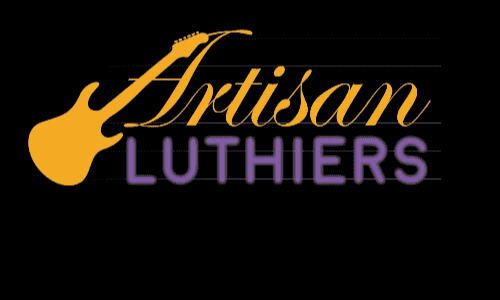
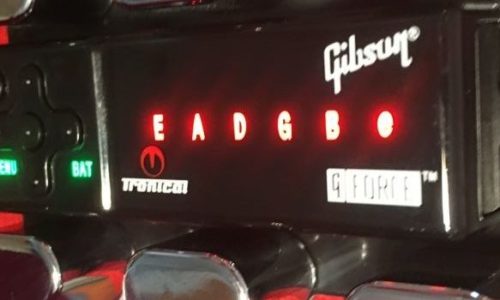
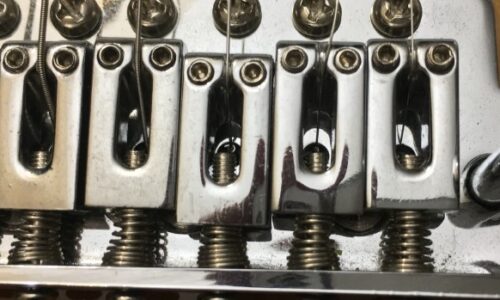
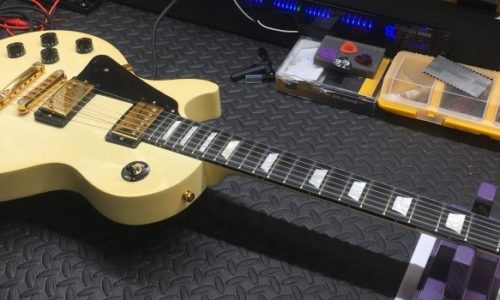
There’s nothing like a good guitar setup to make playing fun again.
What considerations should I keep in mind when choosing medications for mental health conditions.
Find something that helps you to NOT vote for democrats, RINO’s, liberals, progressives, socialist, communists.
Can you write a new article on best bass strings for different genres of music? Thanks!
Great info to help me dial in my bass!
Is there anything different on doing a setup on a short-scale violin bass?
Great article. Although I wouldn’t let it go for a long time without a professional setup, I think it is important to keep your guitar or bass calibrated for optimal playability. A lot of people do not realize how out-of-whack their guitar is until they get it back after a proper setup. It just feels sooooo much better. It’s also worth your time to find a shop that will also detail your guitar and get into the fine points of care/maintenance.
For those who can’t afford to buy a high-end guitar stand, this is a good option. Learn the foundations of guitar playing with the help of online videos, tutorials, and instruction guides. As an example, check out this site: https://nationalguitaracademy.com/lessons/g-chord-on-guitar/
Good solid information. Playability is a big factor in being able to learn and become a better player. The key here, is to work with a tech who has a solid reputation for doing good work.
I never really thought much about a professional setup and how it can improve my guitar. A friend encouraged me to get my guitar setup by a highly rated tech shop. Wow! I was more than surprised at how much better it played. The action was lower, the pickup adjustment increased sound output, and they did something to the term so it stays in tune perfectly. Yes, you should get a real setup every so often.
The StudyBass.com website has a guide for electric bass setups which I found useful. To do it properly you will need some tools made for the job. The good tools are not cheap but over time you will save enough money to have paid for them many times over.
I played by new Fender bass for 4 years before I got a setup. I figured it’s a Fender so it has to be in perfect condition to play. When I got it back from my tech it was like a totally different (far better) bass! The action was much lower, the sound vastly improved (raised my pickups), and it was definitely easier to play. Bottom line, yes, get a professional bass setup every once in a while.
Yes! DO get a professional setup! The difference in before and after is amazing if you hire somebody that knows their stuff.
A good setup does amazing things for playability. I had my Taylor 414ce acoustic for about several years before taking it in for a “professional setup”. I had always assumed that it came from the factory ready to play and not needing any service. Recently I just felt that maybe it could play better.
I took it to a local acoustic guitar luthier for a professional setup. When I got it back I was amazed at how much better it was. The action was much lower, the new phosphor strings feel super smooth, and the shop even worked the frets and did a full detailing.
It’s now even better than the day I bought it. A professional setup is well worth the money invested.
What’s involved? Will it really make your guitar play better? And is it possible to do it yourself, or should you leave it to a pro?
Read reviews before you let anyone work on your guitar! I’ve had to pay a few people for setups that were terrible. Finally, I found a guy working out of his house that knows what he’s doing. Even though I have to drive about 30 miles to his shop it’s worth it.
Nice article but I think I’ll keep taking my guitar to a shop for setups (NOT Guitar Center!). I think there’s a lot of value when somebody with a lot of experience and the right tools does the work. I do little stuff but when my local guy in Atoka OK does a setup, man it feels perfect.
Since the 12th fret is the halfway point between the bridge and the nut, if the open string and 12th fret are both in tune, then the rest of the notes on the guitar will also be in tune.
For a long time, I thought the whole setup thing was just hype. When I had to take my guitar in for a wiring issue my tech talked me into it. Wow, was that ever a good move! My guitar is easier to play and the notes are spot-on. My setup was well worth the money.
I’m in California and trying to figure out what to do. I’ve come to realize that handling things are over my head. Your article convinced me that I need professional help.
I took your advice and had a tech in Austin do a setup on my Warwick bass. It’s noticeably improved the depth of the output. I can cut through much better now, even though I’m using only an Ampeg 112 amp
A good article on guitar bass setup. I am learning the guitar recording process and for this, it is very crucial to know the setup process. I am also learning the different parts of a guitar and recently replaced the Nashville bridge unit of my own guitar. It is working fine now and I have got information on the guitar set up process as well and have decided to proceed with this information. Thanks a lot for this content.